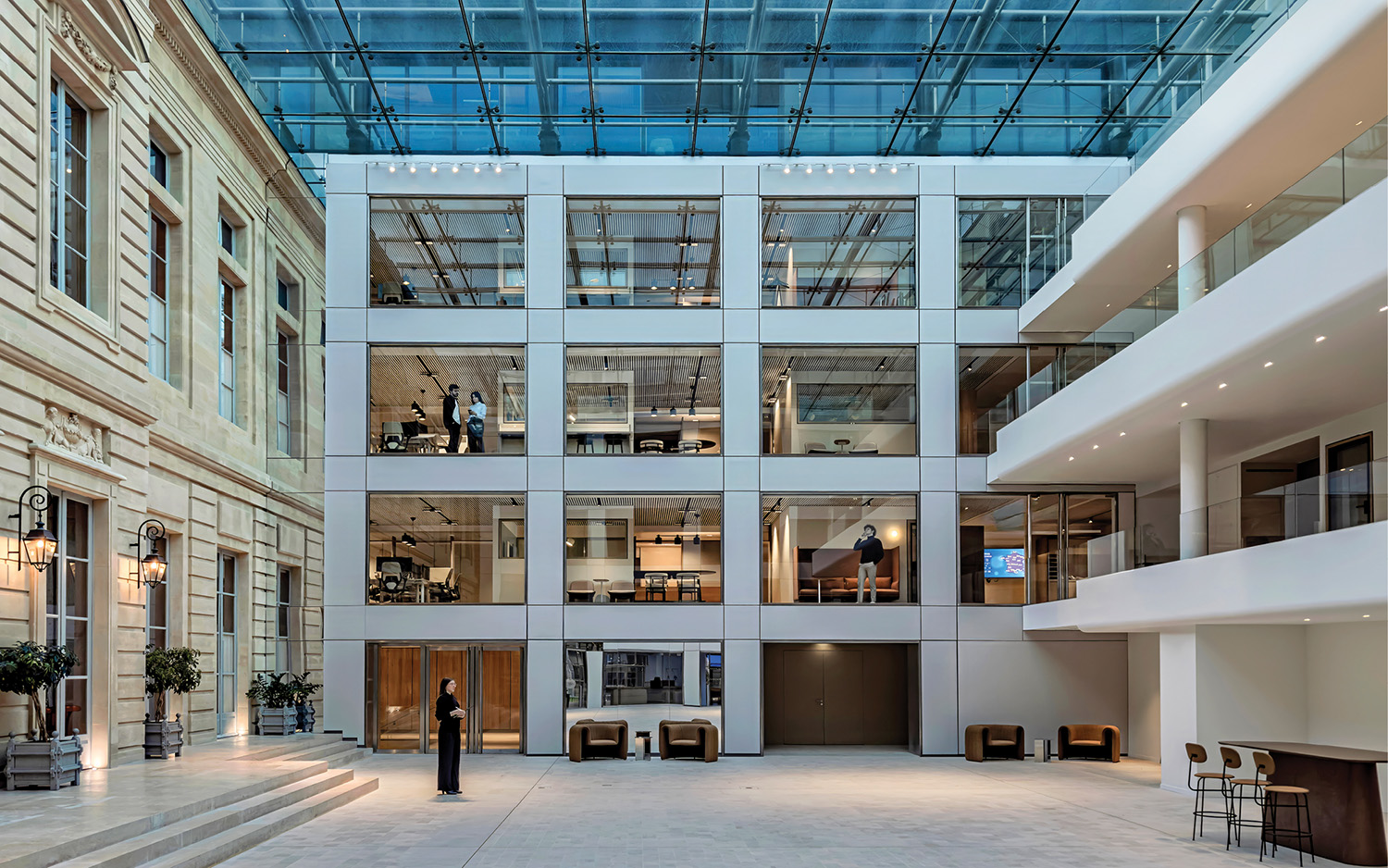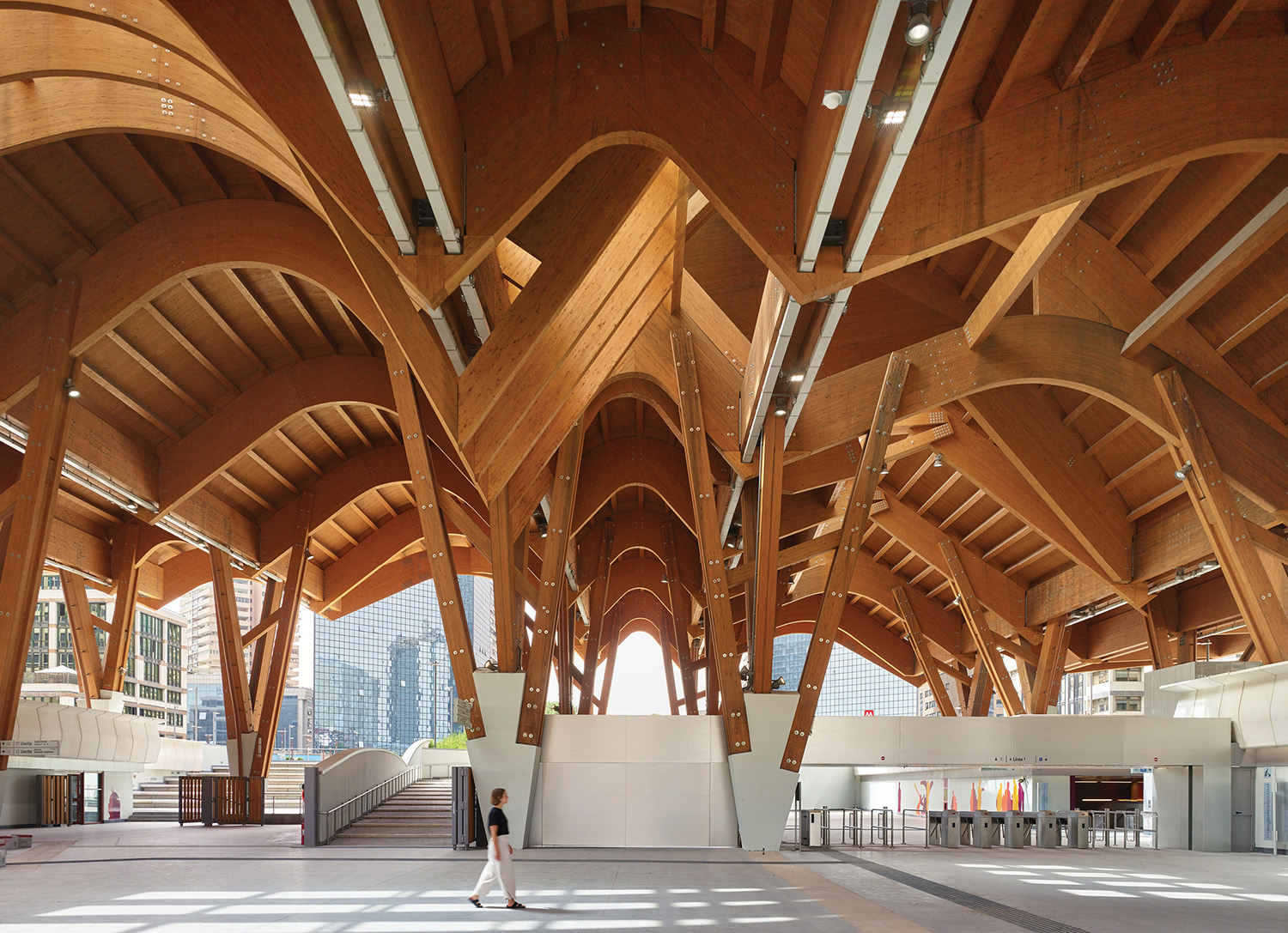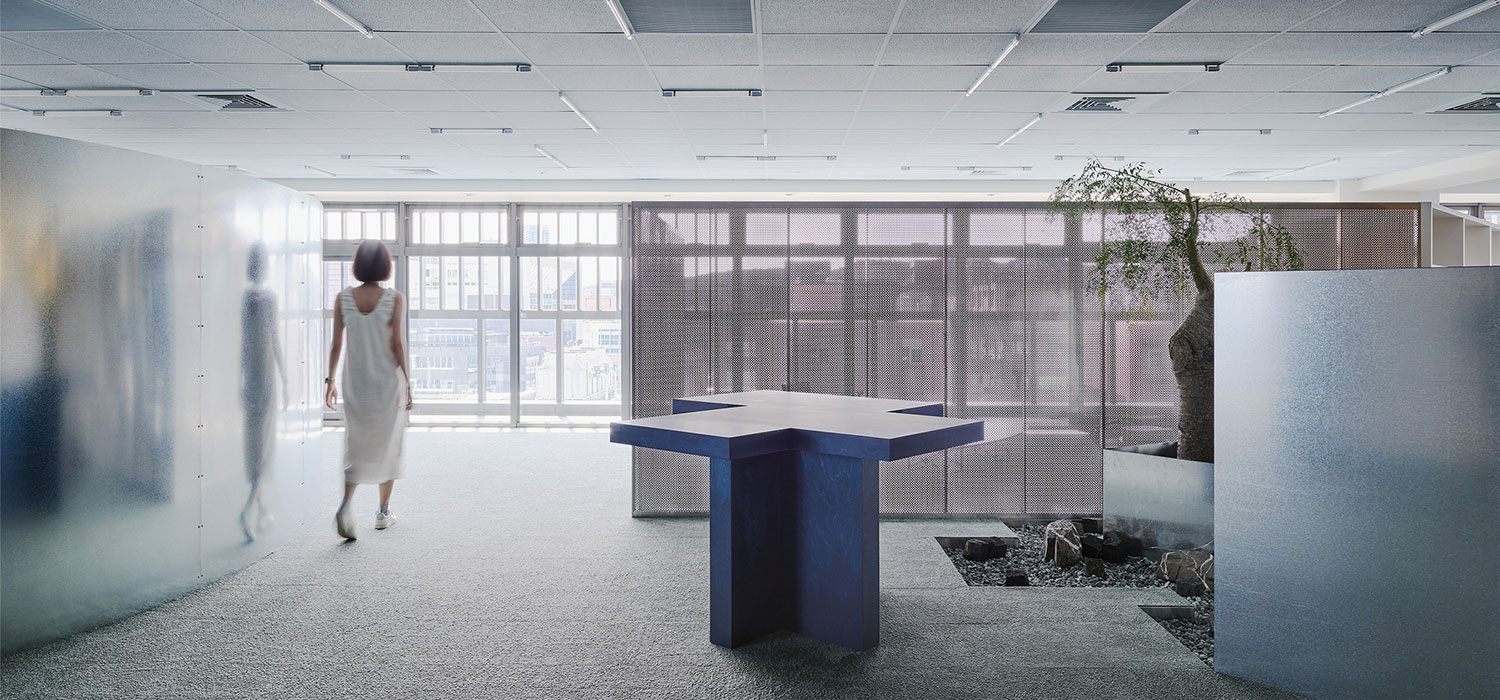No More Classrooms, No More Books: Belzberg Renovates Occidental College
Being President Barack Obama’s alma mater is Occidental College’s biggest claim to fame. But a renovated building on the Los Angeles campus has become another talking point. That’s thanks to Hagy Belzberg, who won a strictly ideas-based competition for the redo of century-old Johnson Hall. Its facade, a mash-up of neoclassical and Spanish colonial, was to be retained, however the interior was wide open to reinvention as the McKinnon Center for Global Affairs. Belzberg ran with it.
He started by looking at the way young people think, learn, and interact with technology and one another. (The father of children age 7 and 14, he has a live-in focus group.) And he found that the old passive learning paradigm—classrooms, lecture halls—was obsolete or at least heading that way. Today, education needs to be participatory, to follow a meandering path rather than a straight trajectory, and technology is king. So Belzberg Architects conceived the building as “itself technology rather than just housing technology,” he comments.
That required demolition, of course. Gutting all four levels, 40,000 square feet, allowed him to make a big statement with an atrium lobby front and center. Up on two, the main attraction is an auditorium, also double-height. Classrooms and faculty offices occupy most of the remaining space on the lower three levels; the fourth is entirely offices.
The technological nexus of the entire building is in the lobby—an intervention that he describes as a “digital Post-it wall.” More properly called the Global Forum, it’s a gently folded plane in slumped glass, subtly textured and sandwiching a layer of vinyl printed with one of two graphic patterns. “Each glass panel fits in a particular place in the composition. It’s a jigsaw puzzle,” he explains.
Kinetic aspects of the wall are twofold. To begin with, it incorporates 10 monitors—but not just any old TVs. The monitors are what makes the wall, without a doubt, a magnum opus of technology. Members of the Occidental community post their content, presentations, and on-line conversations on the screens via a proprietary app named Global Crossroads. “It’s the college’s marketplace for ideas, a platform for topics of international importance,” he says. The app also makes the wall an interdisciplinary element accessible to the entire campus, not just those enrolled in the relevant curriculum. Access even extends to the students studying abroad. World affairs, he adds, “should be all about the exchange of ideas.”
The other kinetic aspect involves computer-controlled LEDs. White is their default setting. Once someone mounts a presentation, however, it’s announced by blues or purples or oranges sweeping across the wall. “As the tones move, they create a moment. It’s like the curtain going up on an old-time movie,” he continues. Speaking of old-time, what to do when the wall’s technology becomes not-so-cutting-edge? Belzberg, always on his toes, gave it built-in flexibility. The glass can be converted to touch screens for increased interactivity, and monitors can be added.
As for the more traditional learning environments, they’re not entirely traditional either. Classrooms, eschewing the usual inward focus, are fronted by glass that can furthermore fold away, leaving nothing but a balustrade. (When privacy is needed, accordion doors or curtains can slide closed.) In addition, the widened, brightened hallways outside double as impromptu education spaces—white glass wall panels can be written on, and benches seem to suggest, “Let’s sit and discuss.”
Belzberg’s other classroom typology is the Innovation Lab. In this glass box off the lobby, interactive media plays a role again. A conventional roll-down projection screen, for example, is updated with what he calls “a wireless collaboration system” allowing students to try out their content in a smaller arena than the Post-it wall outside. There’s also a rear-projection screen. It’s completely transparent when not in use. When it is, passersby seeing the images, albeit in reverse, are perhaps stimulated to engage in the conversation.
He swapped his technology hat for a preservation one when it came to the auditorium, originally a chapel. Its trio of tall windows and its ceiling beams, painted with a floral motif, had long been sealed over. After discovering them during demolition, he painstakingly restored them. History, after all, is crucial to a well-rounded education.
Project Team: Dan Rentsch; Chris Sanford; Susan Nwankpa; Chris Arntzen; Corey Taylor; David Cheung; Kris Leese; Micah Belzberg; Brock Desmit; Barry Gartin; Ashley Coon: Belzberg Architects. Teal Brogden Schram: Lighting Consultant. Second Story: Media Consultant. KCK Architects and Planners: Historical Consultant. Thornton Tomasetti: Structural Engineer. California Engineering Design Group: Mechanical Engineer. Wyatt Design Group: Electrical Engineer. Newson Brown Acoustics: Acoustical Engineer. Custom Glass Specialists: Glasswork. Spectrum Oak Products: Woodwork. W.E. O’Neil Construction: General Contractor. Schwanke Construction Management: Project Manager.


